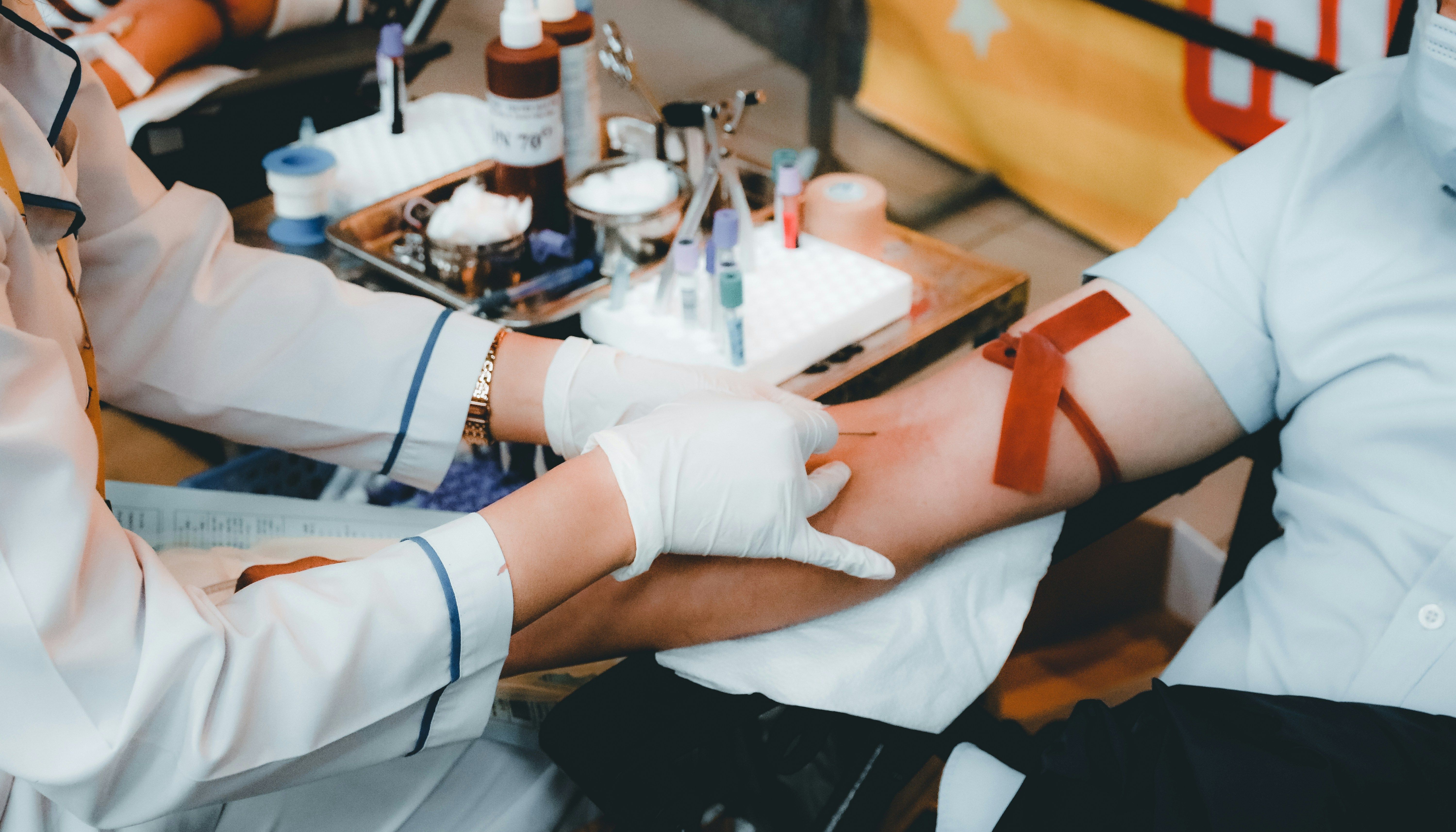Key takeaways:
- You may want to get your testosterone tested if you’re having symptoms like low libido, fatigue, increased body fat, or erectile dysfunction.
- There are several methods for testing testosterone levels, including traditional in-person blood tests and at-home options like shoulder blood tests, finger-pricking blood tests, and saliva tests.
- You should test in the morning when your T levels are at their highest; no fasting is necessary.
- The range for “normal” testosterone levels can be anywhere from 300 to 1000 ng/dL, but this is based on the general population which includes the sick, elderly, obese, etc. What is more important is to gauge subjective improvement with an increase in testosterone levels. Benchmarks used from the Framingham Heart Study data were 97 pg/mL for free testosterone (FT) and 503 ng/dL for total testosterone (TT), representing -1 standard deviation of the mean for healthy, non-obese 19-40 year old men, which can serve as a rough starting point.
- In addition to testosterone levels, measuring luteinizing hormone (LH) can help differentiate between primary and secondary hypogonadism, aiding in treatment decisions.
Getting your testosterone levels tested is one way to figure out if symptoms like erectile dysfunction (ED), low libido, and persistent fatigue are occurring because of inadequate hormone levels. These days, you can opt for the traditional route of visiting a urologist or even test your testosterone at home. As easy as it is to get your levels checked, your results may not always be as straightforward as they seem. This article will break down not just how to get your testosterone tested, but why symptoms matter just as much (if not more) than numbers.
Why test your testosterone levels?
If you’re dealing with symptoms like ED, fatigue, increased body fat, and depression, your doctor may suggest getting your testosterone levels checked.
Considered the quintessential male sex hormone, testosterone does a lot more than put hair on your chest or deepen your voice during puberty. It regulates your libido and sense of well-being, maintains strong bones and muscles, helps your body make new red blood cells, and plays a pivotal role in sperm production.
Finding out you have low levels can help you devise a plan to raise your levels, whether that’s going on TRT, taking a medication like enclomiphene, or making lifestyle changes to improve testosterone.
Some studies show that up to 25% of men who go on testosterone therapy do not get their testosterone tested prior to starting treatment, and nearly half do not have follow-up tests to ensure the therapy is even working in their favor.
How to test your testosterone levels
There are primarily four different testosterone testing methods:
- In-person blood test: The classic method of testing your testosterone is to have your blood drawn in a lab or urologist’s office. This type of test is accurate and relatively quick, though the use of a needle can be painful for some.
- At-home blood test (shoulder): At-home testosterone test kits that draw blood from your shoulder (like the test used at Maximus) use blood lancet devices, which have been considered less painful in clinical trials in comparison to finger pricking and standard venous retrieval.
- At-home finger-pricking blood test: These tests are not always accurate as results can be impacted by how the dried blood spot was collected and temperature variations during shipping.
- At-home saliva test: Saliva tests may be convenient and pain-freel, but they also run the risk of providing inaccurate results due to collection methods and oral hygiene. Even more, saliva tests tend to offer less information than blood tests, typically only showing the free, unbound fraction of testosterone and not other important hormonal biomarkers.
What time of day should you test your testosterone?
Testosterone levels tend to peak in the morning, so you should test in the morning. The National Library of Medicine recommends performing testosterone tests between 7am and 10am as a general guideline.
How long should you fast before testing?
Before most blood tests, you are typically required to refrain from eating or drinking at least a few hours before the test. However, studies show there are no significant differences between fasting and non-fasting testosterone levels. If you schedule your testosterone test after breakfast, don’t sweat it.
How to read and interpret testosterone blood test results
Many labs consider a total testosterone level between 300 to 800 ng/dL to be “normal,”The American Urological Association (AUA) recommends not making a clinical diagnosis of testosterone deficiency unless patients have low total testosterone levels combined with symptoms or signs like those mentioned earlier: erectile dysfunction, fatigue, low libido, etc. The AUA also defines “success” with testosterone therapy as reaching the 450-600 ng/dL range accompanied by a resolution in signs and symptoms.
It’s worth noting there is considerable variability in testosterone reference ranges. The “normal” reference ranges we mentioned earlier are based on the general population, which includes people whose testosterone levels may be lower because they are sick, elderly, obese, etc. These ranges may not accurately reflect the expected ranges in younger, healthier individuals. It’s important to take symptoms into account and to gauge subjective improvement with an increase in testosterone levels. Benchmarks used from the Framingham Heart Study data were 97 pg/mL for free testosterone (FT) and 503 ng/dL for total testosterone (TT), representing -1 standard deviation of the mean for healthy, non-obese 19-40 year old men, which can serve as a rough starting point.Generally, symptoms offer a strong indicator of whether or not your testosterone levels are inadequate. Along with taking symptoms into account, it is recommended to assess free testosterone, or bioavailable testosterone, in addition to total testosterone, which we’ll discuss more in detail below.
Total vs. free testosterone: What’s the difference?
Most of your testosterone is tightly bound to proteins like sex hormone-binding globulin (SHBG) or albumin. A minor amount (1-2%) circulates as free, our unbound, testosterone. While this may not sound like much, your free testosterone levels are actually a better indicator of low testosterone because this type of testosterone is believed to be “metabolically active,” or more easily used by your body.
Low levels of free testosterone are more likely to cause the symptoms associated with a low testosterone diagnosis. Therefore, testing your free testosterone separately is crucial in diagnosing many diseases and conditions, including testosterone deficiency.
However, most labs only test total testosterone, not specifying whether or not your free testosterone levels are unusually low. This is a huge blind spot and why Maximus’ at-home blood tests include free and total testosterone levels as well as insights into other important hormonal biomarkers.
Other important hormonal biomarkers to look at
Along with testing your free and total testosterone levels, your doctor may also want to measure luteinizing hormone (LH). A low or low/normal LH level often points to a defect in the brain signaling to the testes (secondary hypogonadism), while an elevated LH level suggests a testicular defect (primary hypogonadism). Knowing what kind of hypogonadism you have, if any, is crucial in choosing the right treatment plan.
How to test your testosterone levels at home
Maximus offers at-home testosterone testing, which tests both free and total testosterone, SHBG, and LH in order to offer a more comprehensive view of your hormonal health. Before starting a testosterone therapy like enclomiphene or Oral testosterone, you will meet with a board-licensed physician to discuss your health history, specific symptoms, test results and overall health goals. Lab tests are performed twice: before starting treatment and after to ensure the protocol is working.
Learn more about solutions for improving your testosterone.
Disclaimer: The contents of this article, including, but not limited to, text, graphics, images, and other information, is for information purposes only and does not constitute medical advice. The information contained herein is not a substitute for and should never be relied upon for professional medical advice. The content is not meant to be complete or exhaustive or to be applicable to any specific individual's medical condition. You should consult a licensed healthcare professional before starting any health protocol and seek the advice of your physician or other medical professional if you have questions or concerns about a medical condition. Always talk to your doctor about the risks and benefits of any treatment. Never disregard or delay seeking professional medical advice or treatment because of something you have read on this site. Maximus does not recommend, endorse, or make any representation about the efficacy, appropriateness, or suitability of any specific test, products, procedures, treatments, services, opinions, healthcare providers or other information contained herein. Maximus is not responsible for, nor will they bear any liability for, the content provided herein or any actions or outcomes resulting from or related to its use.





